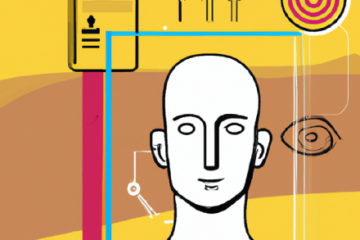LitmusWorld CX Dictionary
LitmusWorld CX Dictionary
40 Buzzwords Defined

Understanding any industry starts with learning the terminology that is commonly used on a day-to-day basis.
To help you brush up your customer experience management skills, check out this exclusive list of 40 buzzwords prepared by the CX experts at LitmusWorld that will enhance your CX dictionary.
#
360 Degree View of the Customer
A 360-degree view of the customer occurs when a business aggregates data from all customer touchpoints, providing insights that allow them to better understand – and even anticipate – their customers’ expectations, needs, and desires.
A
Actionable Insights
Actionable insights describe information that can be acted upon to improve customer experience.
Age of the Customer
The term, the Age of the Customer, was coined by Forrester Research in 2011. It refers to “a 20-year business cycle in which power is shifting from businesses and institutions to end consumers” as a result of consumers’ constant access to information about products and services over the Internet.
Artificial Intelligence (AI)
Artificial intelligence (AI) is when a technology system is capable of simulating human-like decision-making and execution, but at a much higher level and speed. With AI, systems can identify correlations, patterns, trends, and statistics in large sets of customer data and quickly present the results.
C
Case Management
Case management is the process of responding to a customer’s concern or complaint and resolving the case by achieving an outcome that is satisfactory to the customer.
Close the Loop
Close the loop is the process of a manager receiving notice of an issue such as a customer complaint or operational issue, assigning the case to an employee or stakeholder to resolve, and then receiving a report on the outcome of the case.
Customer Expectations
Customer expectations are the perceived value or benefits a customer seeks from a company’s product or service. Customer expectations are typically driven by a customer’s previous experience with a company or through the experience of a friend or family member.
Customer Experience (CX)
Forrester defines customer experience (CX) as “how customers perceive their interactions with your company.”
Customer Experience Management (CEM)
Gartner defines customer experience management (CEM) as “the practice of designing and reacting to customer interactions to meet or exceed customer expectations and, thus, increase customer satisfaction, loyalty, and advocacy.”
Customer Experience Maturity Model
A customer experience maturity model identifies the activities, processes, and habits of an organization that defines mature or developed customer experience management (CEM) programs.
Customer Feedback
Customer feedback is a customer’s expression of their opinion about a brand’s products, services, or experience. Customer feedback indicates whether the customer is satisfied or dissatisfied. Feedback can be solicited by a brand through tools like surveys or unsolicited through channels like social media and review sites.
Customer Journey Map
A customer journey map is a visual representation of every experience customers have with a brand. The map includes all customer touchpoints and helps provide a complete picture of the customer life cycle.
Customer Loyalty
Customer loyalty refers to a customer’s decision to continuously buy products or services from a brand. Customer loyalty is the result of consistently positive experiences and can be measured by how frequently a customer purchases from a brand over one of its competitors.
Customer Relationship Management (CRM)
Customer Relationship Management (CRM) is an approach to understanding customer patterns and behavior through the use of technology. It allows brands to better manage and nurture relationships with existing and potential customers.
Customer Satisfaction (CSAT)
Customer satisfaction measures how a brand’s products or services meet or exceed customer expectations. Customer satisfaction provides brands with a metric they can use to manage and improve customer experience.
Customer Service
Customer service is the interactions and support provided by a business with the people who purchase its products or services.
Customer Survey
A customer survey is a tool used to gather feedback and insights about your customers such as customer satisfaction levels and Net Promoter Score. Companies use customer surveys to gain actionable feedback that can be used to improve customer experience, reduce churn, and increase loyalty.
Customer-Centric Organisation
A customer-centric organization extends its efforts beyond providing a positive customer experience. Truly customer-centric organizations, strive to provide the best value for their customers by understanding their customers’ mission and helping them achieve their goals.
CX Action Campaign
A CX action campaign is the process of proactively actioning customer feedback and performance insights by assigning employees at different levels of the organization tasks that will have a direct impact on improving specific KPIs.
CX Transformation
CX transformation is when an organization undergoes a shift towards a more customer-centric operating model. Transformation involves improving the interactions a company has with its customers and the value they provide.
D
Data Mining
Data mining uncovers new patterns in customer behavior that are non-intuitive by examining large databases of information.
Double-Barreled Question
A double-barreled question is when a survey question touches on more than one issue, but only offers the respondent the ability to provide one answer. Double-barreled questions elicit responses that are not actionable and hinder a brand’s ability to make CX improvements using survey data.
K
Key Driver Analysis
Key driver analysis is the investigation of the relationship between elements of a brand, product or service, and their effect on customer behavior. Key drivers help determine the areas of a business that are most important to customers.
M
Machine Learning
Machine learning is an application of artificial intelligence (AI). It is the practice of giving technology systems access to customer data so they can learn to identify correlations, patterns, trends, and statistics in large datasets faster than humans.
Mobile Forms Software
Mobile forms software is a mobile application that automates checklist and audit processes and eliminates the need for pen and paper data collection. Mobile forms software facilitates richer data collection, improves visibility into operational performance, and provides actionable analysis based on audit results.
Mystery Shopper
A mystery shopper (or secret shopper) is someone hired by a business to interact with their brand under the guise of being a prospective customer. The mystery shopper observes how front-line staff interact with customers and assesses performance based on specific, predefined criteria that the brand is trying to measure.
Mystery Shopping
Mystery shopping allows businesses to collect unbiased feedback about their customer experience and the delivery of brand standards. Mystery shopping requires a shopper to interact with a brand under the guise of being a prospective customer so they can observe how front-line staff interact with customers and assesses performance based on specific, predefined criteria that the brand wants to measure.
N
Net Promoter System® (NPS®)
Bain & Company defines Net Promoter System® or NPS® as a common CX metric used to measure a customers’ overall perception of a brand and their likeliness to recommend its product or services. NPS® is calculated using a scale of 0-10 and responses are categorized as: Promoters (score 9-10), Passives (score 7-8), Detractors (score 0-6).
O
Omnichannel
Omnichannel is an approach to customer experience that aims to provide customers with the same quality of experience at every stage of their journey and at every point of interaction, whether it be online, mobile, or in-store.
Operational Audit
An operational audit is a process of assessing a company’s level of compliance against the standards they have set for their business by monitoring key processes and reviewing the performance of those processes against objectives.
P
Predictive Analytics
Predictive analytics is used to predict future events and trends based on historical data through a variety of techniques including artificial intelligence, machine learning, and data mining.
S
Scorecard
A scorecard is a data visualization tool that represents the performance of a customer experience program. It helps companies quickly understand program performance and progress towards particular goals or targets over time.
Sentiment Analysis
Sentiment analysis evaluates unstructured data (written or spoken language) and identifies trends in opinion (positive, negative, or neutral) about a variety of topics that relate to a company’s brand, product, services, or competition.
Social Media Scraping
Social media scraping or “social listening” is a form of feedback management that allows companies to monitor and proactively listen to what people are saying about their brand on social media channels.
Structured Data
Structured data is organized information that can be readily found in defined lengths and formats such as numbers, dates, and groups of words.
T
Text Analytics
Text analytics software uses data mining and natural language processing to analyze free-form text written about a brand by customers. Text analytics identifies trends, patterns, and sentiment so brands can take action to improve their customer experience based on the analyzed feedback.
Touchpoint
A touchpoint is any moment in which customers engage with a company’s brand whether it be online, in person, an event, phone call, or word of mouth.
U
Unstructured Data
Unlike structured data (see definition), unstructured data is free-form content that is primarily found in the form of text, audio, videos, and photos. This data is more difficult to capture and process on a large scale, but is critical as it’s where the majority of rich customer data resides.
V
Voice of the Customer (VOC)
Voice of the Customer (VOC) is the process of capturing structured and unstructured customer feedback data across the customer life cycle, analyzing it to gain customer insights, and actioning those insights to build a more positive customer experience.
Voice of the Employee (VOE)
Voice of the Employee (VOE) is the collective needs and wants of a company’s employees. VOE programs facilitate communication between a company and its employees by allowing the company to listen, interpret, and act on employee feedback.


